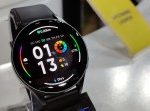
Not that long ago, if you were a runner in the market for a wearable, your options were limited to a handful of brands, each with a few models, max. With any of them, you could expect questionable accuracy, bare bones features, limited battery life, and very little comfort. (My first GPS-equipped watch was about the size of a hockey puck, but rectangular.)
Fortunately, the wearable industry has made leaps and bounds in the last decade or so. While that’s mostly good news — think improved accuracy, more features, better fit, and enhanced durability — it also means you have a lot more to think about when shopping. As with a pair of trainers, a good choice for one athlete may not work well for another.
Here are seven questions to ask yourself in advance of your next running wearable purchase:
1. What’s the purpose?
The first things to consider in your wearable hunt? What you plan to use it for, and what exactly you want out of it. Do you exclusively run, or are you a multi-sport athlete who runs but also cycles, swims, hikes, and more? Some want more of a smartwatch feel, while others would prefer an exclusive fitness wearable. Are you a beginner who’s trying to build consistency or an elite seeking marginal performance gains? Do you train mostly on sidewalks and roads, or are you an off-road junkie who prefers mountains and trails? The more you can narrow down the purpose of your wearable, the smoother your buying experience will be, and the happier you’ll be with the one you choose.
2. Will it be an all-day or activity-specific accessory?
It’s a good idea to determine whether you’re looking for a watch to wear around the clock (hello, Fitbit), or exclusively an accessory for the active hours of your day (hi, Garmin). If your wearable is going to serve double duty, you may want one that’s sleek, not overly sporty, and complementary to your everyday clothes, like this Apple Watch that has interchangeable bands. On the other hand, if you’re only going to wear the watch while running, you may not care as much about how it looks or whether you can pull it off with a button-down shirt or a pair of heels.
3. What’s a price range you’re comfortable with?
Few things are more deflating than finding the purchase of your dreams only to realize it’s out of your budget. Spare yourself that late-in-the-game letdown by determining how much you can spend before you start shopping. Cheaper models start at around $150, like this one from Polar, while the most tricked-out ones (we’re talking night vision, advanced GPS tracking, ski maps, and more) go above four digits.
Know that there are high-quality watches throughout that range (and some of my favorites, like the Garmin Vivoactive 4, are toward the lower end), but as you go up in price, you’ll go up in features, too. If you’re not in a rush to buy, keep an eye on the model you want since there’s a good chance it will go on sale at some point — whether a newer edition releases or they have a sale.
4. What size are your wrists?
My single biggest turn-off in a running wearable is a poor fit. I have tiny wrists, even for a 5-foot-tall woman, and am easily bothered by anything bulky, heavy, restrictive, or unstable. Watches designed for men almost never fit me well, and even some of the fancier models for women are bigger than I’d like. Thankfully, there are several options that cater to female wrists out there — though not nearly as many as those meant for men. The Garmin Forerunner 45 and Fitbit Versa line snugly fit smaller wrists. (This discontinued Garmin Forerunner 10 is still my favorite watch I’ve ever worn, precisely because it offers such a snug, unobtrusive fit.) Just know that opting for a smaller watch probably means a smaller screen.
5. How much do you care about metrics?
There’s not much that a top-end wearable can’t do these days. Whether you want to measure blood oxygen saturation, track 80+ sport modes, or navigate uncharted territory using just your watch, you can. It will likely cost you a pretty penny though.
Some people go nuts for metrics, meticulously tracking, recording, and comparing them in their pursuit of athletic excellence. Others, though, care about a few key ones, but can do without the rest. I’m in the second camp. All I really want in a watch is current pace, average pace, distance run, and elevation gained and lost — about as basic as it gets these days. But because I track so few things, it’s important that the ones I do track are accurate. To feel good in that department, I rely on a mix of thorough reviews, discussions with friends, and plenty of trial runs with different models.
6. Does battery life matter to you?
Depending on the model, a watch’s battery life may last just a few runs, or it may stay charged through dozens of them. If you only go into GPS mode a few times a week, you’ll probably be fine with any choice. But if you use GPS mode a lot (as high mileage runners tend to do), constantly stream music, or are just bad about remembering to recharge, you’re a good candidate for a wearable with strong battery life, a battery-saving mode, or even built-in solar charging. On the downside, you can expect to pay more for a better battery, and you can also expect a heftier watch to accommodate it.
7. Is getting accurate heart-rate readings important?
Heart-rate training is a popular method among runners, who essentially let their heart rates dictate how hard they push in a given session. It’s a great concept, the point being to let effort be your guide — but worthless if the heart rate you’re looking at is inaccurate. Unfortunately, the wrist-based heart-rate monitors in most watches are not very reliable (especially if your watch is loose at all, you’re a heavy sweater, or the shade of your skin.
But there’s a simple solution that most brands offer: A chest strap that you buy separately, usually in the $50-$100 range that pairs with your watch and is much more trustworthy. If getting accurate heart-rate data is important to you and will impact your training, be sure that the watch you go for is chest strap compatible, and bundle it up with your wearable at the time of purchase.
A final word on wearables
To ensure a smooth shopping experience and a satisfying result, spend a little time on the front end considering why you want a wearable in the first place and what features matter to you most rather than jumping on trends. Are you a metric fiend or more of a minimalist? A rookie runner or a seasoned vet? A one-sport athlete or an enthusiastic dabbler? Looking for a dedicated sports watch or an all-day accessory? Answering questions like those will eliminate options from the large and growing pool while bringing your ideal running wearable into focus.
Powered by WPeMatico



